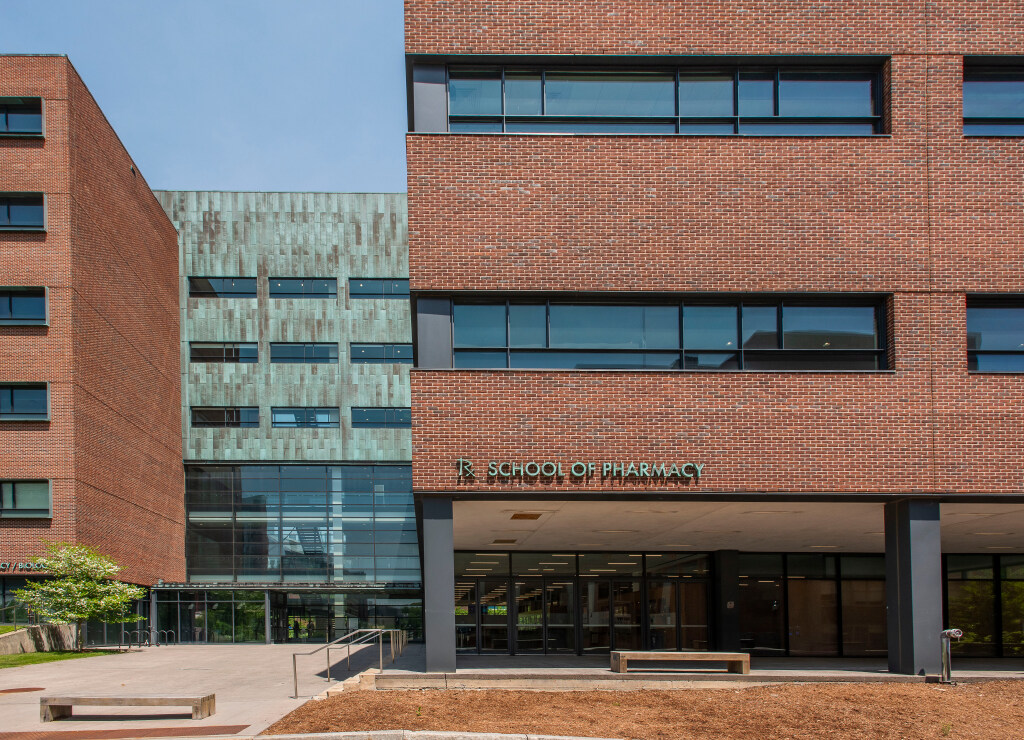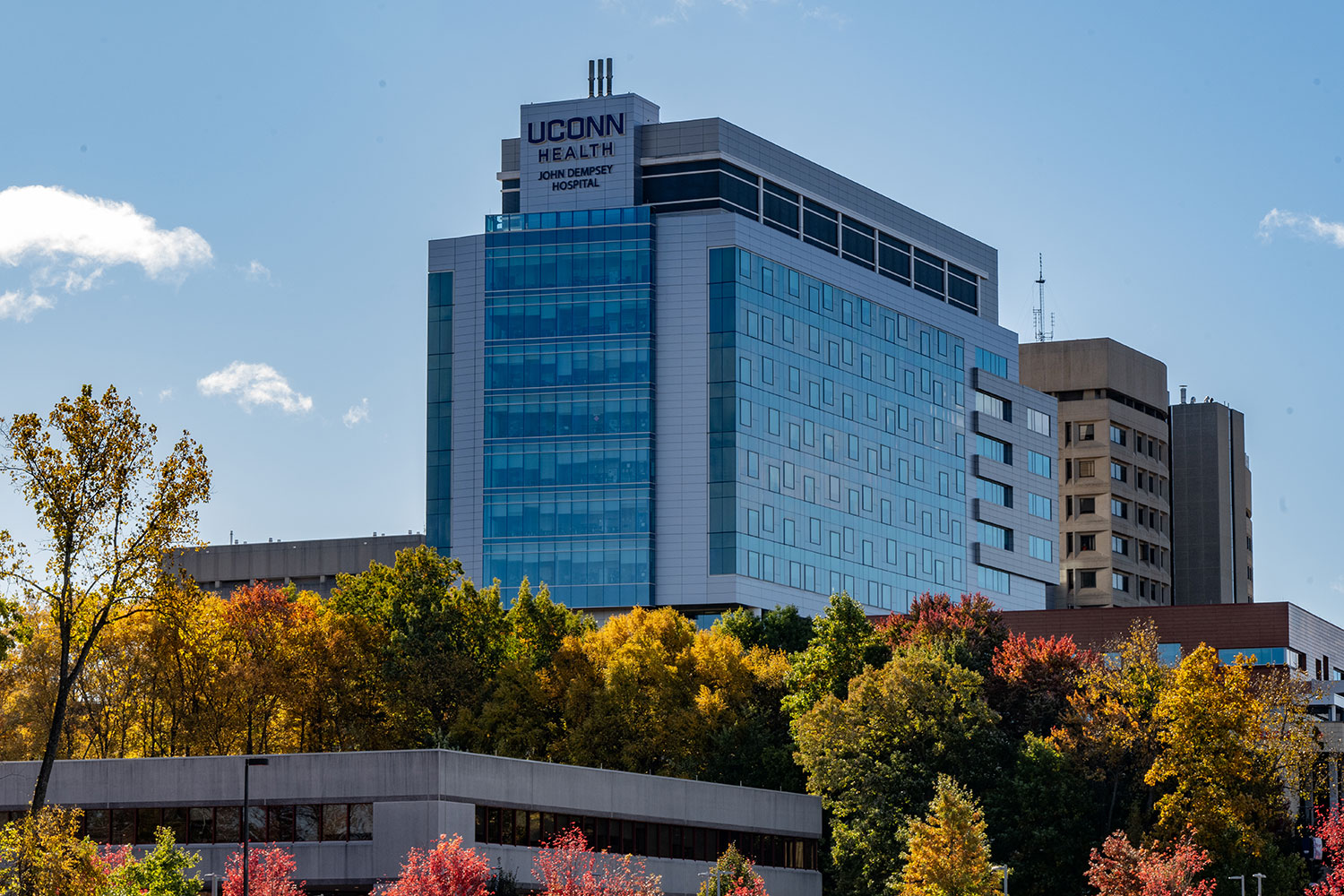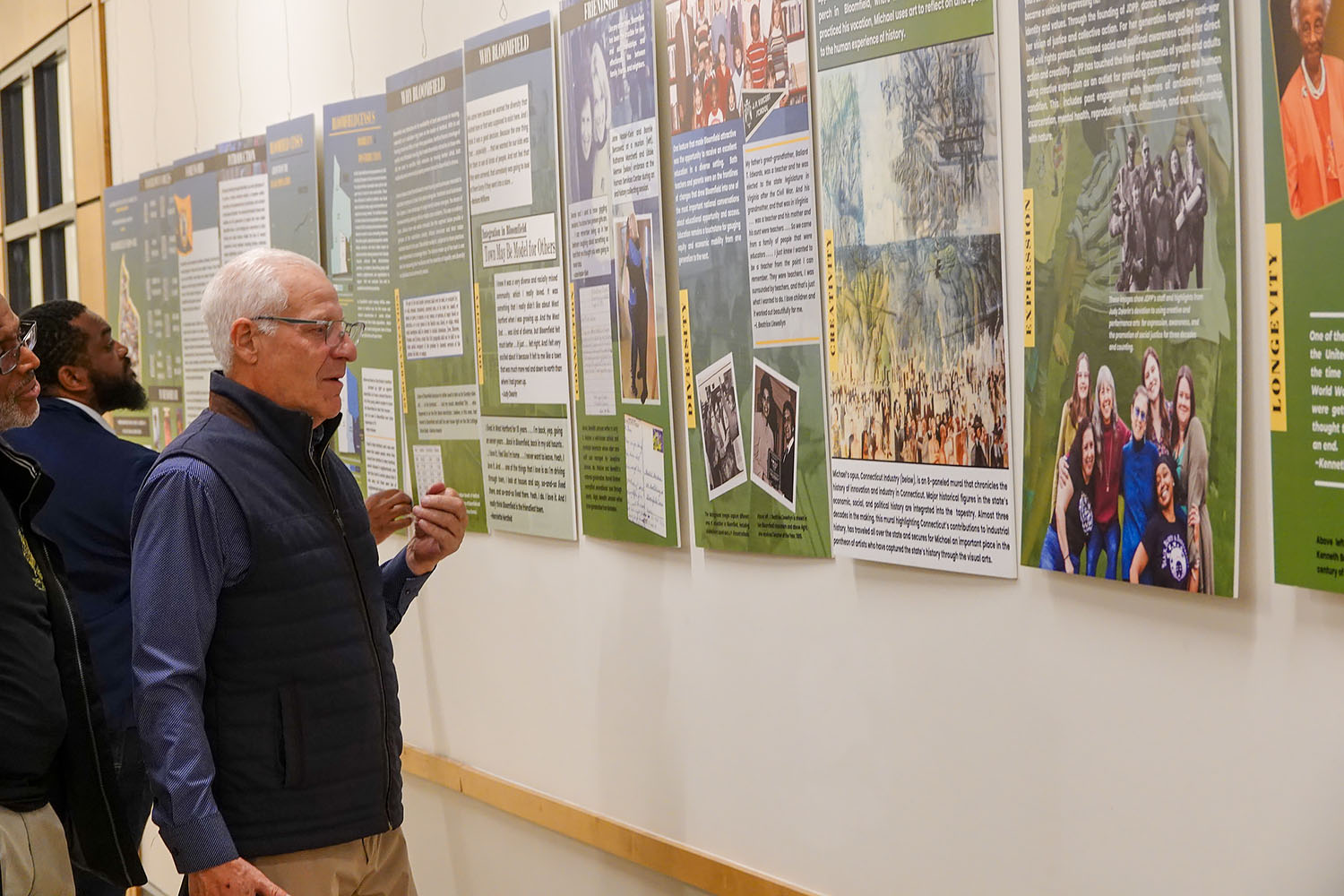There are certain settings where manufacturing quality really, really matters. One of them is at a cruising altitude of 40,000 feet.
With such a low tolerance for error, airplane manufacturers must source parts from trusted, expert suppliers. Many of these companies are headquartered in Connecticut, and one of them boasts a double UConn connection.
Aero Gear, based in Windsor, specializes in the design and manufacture of gears and gearboxes for the aerospace industry. Pat Brueckner has worked at Aero Gear ever since graduating from UConn’s engineering program in 2013, and he’s now the company’s director of engineering.
In 2017, Brueckner got in touch with Jeongho Kim, who was leading the newly established Connecticut Manufacturing Simulation Center (CMSC) in the Innovation Partnership Building at UConn Tech Park — “and the rest,” Brueckner says, “is history.”
The CMSC is a free resource providing technical assistance and manufacturing simulation services to small- to medium-sized companies across Connecticut. Aero Gear was one of the first industry partnerships that the Center forged.
“One day, we got an email reaching out to small- and medium-sized companies like ourselves that wanted to get involved in more cutting-edge technology,” Brueckner recalls. “Our company does like to be on the bleeding edge of things like simulation capabilities and additive manufacturing, so we thought, let’s give it a shot.”
CMSC was formed to help manufacturing companies across Connecticut connect to the mathematical expertise and modeling capabilities of UConn faculty.
“Small- to medium-sized companies do not tend to have in-house large OEM [original equipment manufacturing] capabilities,” explains Kim. CMSC can help fill this gap: “Any company in Connecticut, if they find an issue – some crack or damage in a manufactured workpiece or failure in a certain process that they want to understand better – they can reach out to us for free so we can provide our modeling services.”
CMSC can offer these services for free thanks to federal funding and some matching funds from the Connecticut Department of Economic Community Development, says Kim.
Engineering … With a Twist
“CMSC helps us make sure the virtual world matches the real world,” Brueckner says. “Simulations are not as easy as just loading a model and hitting start. There’s a lot of setup; there’s a lot of validating that the virtual world reflects the real world.”

In one of their collaborations, CMSC supported Aero Gear in tackling a technical problem involving 2.5-pound aluminum blocks. These blocks would be shaped with a specific geometry that would allow for easy simulation and dimensional inspection, enabling them to apply these techniques to more complicated parts later.
The engineering team knew what they needed to produce: a block with regular, equidistant grooves, like a capital E turned on its side. The block also needed to be perfectly straight at the end of the process.
But to carve out the equidistant grooves, the block needed to be held in place by powerful clamps on either end. The problem was that these clamps would end up warping the material.
The solution? Programming the milling machine to introduce a countertwist – something that would not have been conceivable without powerful simulation technology.
“If we know exactly how something is going to twist beforehand, then we can tell our CNC machine to untwist it as it goes along,” Brueckner says. “Then, when you unclamp it, it will actually be straight. That was a pretty big win for us, and for CMSC.”
The aviation industry presents a unique challenge for engineers, combining the hulking power of aircraft machinery with the mathematical elegance needed to ensure that planes reach their destinations safely. This collaborative breakthrough between Aero Gear and CMSC underscores the importance of data-driven modeling for this industry.
“You need to understand exactly how much stress a component can withstand before you put it into a system,” Kim says. “Otherwise, it could lead to a catastrophic failure. That’s why we want to understand and optimize the process.”
This was just one of many wins along the way for the two partners, who foresee even more jet-fueled innovation in the future.
“We’ve done quite a few projects [with CMSC], and all of them have given us really insightful data,” says Brueckner.
“Aero Gear is a really important partner of our Center, and we have been able to introduce Aero Gear to other initiatives in the past as well,” such as research opportunities with the Air Force Research Laboratory, says Kim. “We provide a service to Aero Gear, but at the same time, they provide us with great data and enriching technical discussions. We really enjoy working with them.”
Interested in working with CMSC? Fill out a contact form here.



